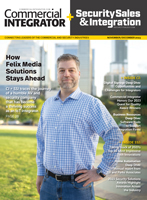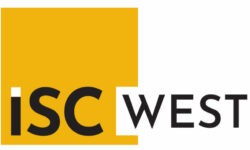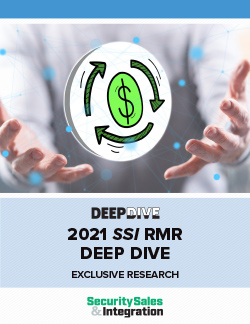Investors Find No Safe Haven in Security

Another data point to watch closely is the pension/investment funds’ allocations to alternative investments (real estate development, private equity and hedge funds), where most entities and their fund investors find themselves grossly overallocated. While this data is sometimes hard to obtain, it is a very real driver of respective sector health (e.g. long-term commercial real estate development, investments committed to PE funds’ leveraged buyout activities and money-chasing, high-return opportunities).
So what should we expect as we turn the corner into 2009? A few major themes that are tied to the current environment — global markets increasingly moving together, credit aftermath hampering growth environment, and consolidation continuing on buyers’ terms. Broadly speaking, most economists and pundits agree we are in a tough market that will likely persist for at least another 12 to 18 months.
The U.S. credit meltdown has resulted in a global credit contraction that will result in reduced credit availability, which in turn will limit credit-constrained enterprises from seizing opportunities for growth and expansion. As such there will be continued ripple effects from the meltdown and economic contractions for awhile. Importantly, enterprises that are liquid and/or have access to credit will be havens for investment capital and likely drive additional industry consolidation.
Residential Monitoring Shaky?
A related sector event that may be accelerated as a result of this changed economic environment is a decline in traditional  residential alarm monitoring business. During recent years technology has evolved that allows customers to self-install, -monitor and -verify. Wireless technologies have also evolved and now can adequately support the market, further breaking down installation and monitoring barriers.
residential alarm monitoring business. During recent years technology has evolved that allows customers to self-install, -monitor and -verify. Wireless technologies have also evolved and now can adequately support the market, further breaking down installation and monitoring barriers.
Historically, limiting the proliferation of this model was a healthy economic environment; today we face a drastically different world. The cost of operating a full-service residential monitoring fleet and related personnel is becoming burdensome for some operators. The incremental upfront and monthly costs may well become an optional expense that financially-strapped consumers could decide to forgo during harsh economic times. Dealers can counteract some of the economic tumult by offering outstanding service on all levels to retain business and expand their portfolios to continue to grow and attract new customers.
Also key to this shift are consumer preferences finally appearing to migrate to this form of business model. Today’s consumers are increasingly proficient with electronics. PDAs enable a streaming-video push for monitoring, thus there appears to be marginal value in residential services except at the higher end of the market. For example, wireless and remote monitoring vendors such as InGrid, Xanboo and others are becoming increasingly relevant as providers delivering self-monitored, low-cost solutions.
No matter if homeowners choose to monitor their own systems, in most cases it will still require a professional installation with an ongoing maintenance/service agreement.
Urgent Need for Network Moxie
Technology acceptance is also a driver in the push for integrators to address higher levels of technology content and interface. At the 2008 Securing New Ground conference in New York, ADT indicated it was striving to migrate upwards into overall business process intelligence via security. Niscayah (formerly Securitas Systems) is likewise increasingly shifting to higher tech applications integration and looking at IT integrators as potential acquisition targets.
Many of the new technology providers like RightCrowd Software and Computer Network Limited (CNL) are also agents of this change. If you doubt the increased aspects of this shift, according to Forrester Research in 2008 IT heads are at least partially responsible for more than 50 percent of business continuity/disaster recovery function decision-making. Accompanying this customer-driven shift is the indus
try’s painfully slow adoption of open standards and common architecture platforms. Much like industrial automation more than a decade ago, electronic security will evolve to open systems and integrators will adapt or be left behind.
If you enjoyed this article and want to receive more valuable industry content like this, click here to sign up for our FREE digital newsletters!

Security Is Our Business, Too
For professionals who recommend, buy and install all types of electronic security equipment, a free subscription to Commercial Integrator + Security Sales & Integration is like having a consultant on call. You’ll find an ideal balance of technology and business coverage, with installation tips and techniques for products and updates on how to add to your bottom line.
A FREE subscription to the top resource for security and integration industry will prove to be invaluable.













